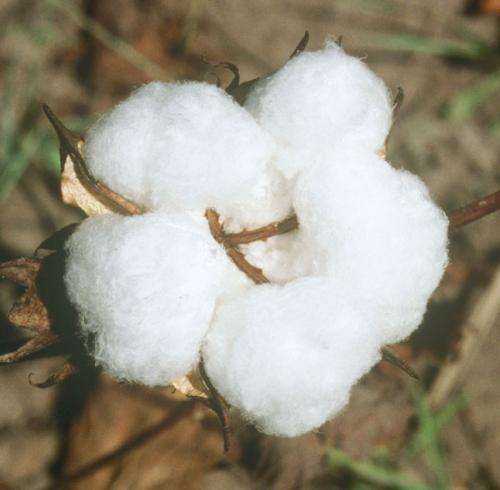Climate change: A promising future for cotton in Cameroon?

While climate change threatens most crops in Africa, its impact could be less on cotton cultivation in Cameroon. A new study by researchers from IRD and its partners shows that the expected climate change over the coming decades should not have a negative effect on Cameroonian plantations. Against all odds, their productivity should even improve significantly by 2050, thanks in particular to conservation agriculture practices adopted by the country. These projections, made according to six climate scenarios based on different farming techniques, are optimistic for Cameroonian producers, for whom cotton is the leading cash crop and often the only alternative.
Improved yield
From observations made in stations and plots from 2001 to 2005 and in 2010 in North Cameroon, the research team simulated the impact of climate forecasts for the next 40 years on the growth of cotton plants. To do this, they calibrated then applied the crop model called "Cropgro" using several farming techniques and six climate scenarios in the north of the country according to projections that, among other things, served as the basis for the fourth IPCC report. While climate projections differ for some variables such as rainfall, the average of these scenarios shows stable rainfall, higher temperatures and evapotranspiration. According to the researchers' simulations, the predicted 0.05°C rise on average per year is expected to slightly increase the annual yield of fields by 1.3 kilograms per hectare, rising to more than 2.5 kg per hectare according to the climate scenarios considered.
Conservation agriculture is essential
This unexpected benefit would result from the combination of several factors. Firstly, how the cotton is grown is crucial. Field productivity is highly dependent on local farming practices. For ten years, Cameroon has adopted measures to restore land with conservation farming techniques, such as sowing under plant cover, tillage or mulching. Many farming practices that would limit the deterioration of cultivated soils are at work in the north of the country and, according to the researchers' simulations, counteract the effects of climate change on crops.
Climate factors themselves could have an unexpected positive influence, and among them, the increase in the percentage of carbon dioxide. Cotton belongs to a type of plant for which CO2 in the atmosphere stimulates photosynthesis (like soya, peanuts and a majority of plants, including all trees). The new study shows that this fertilising effect will help offset other impacts of climate change. The annual yield from cotton fields in Cameroon could increase by around 30 kg per hectare. Nevertheless, the effect of CO2 in the atmosphere on crop yields remains controversial: it varies greatly depending on the model of plant growth used.
The importance of a season of regular rain
The effect of rainfall change on cotton yield also differs from that of crops such as maize, sorghum and millet. In particular, excess water threatens cotton, with increased runoff, leaching of soil and inputs needed for cotton cultivation. In addition, more than the total rainfall, the start date and duration of the rainy season are paramount. A previous study has shown that these two parameters can be used to predict annual cotton yields. Despite the optimistic forecasts of this new work, a steady impoverishment of soil remains, as well as risks related to inter- and intra-seasonal variability and to changes in the price of cotton on the international market, driven by global giants in the sector, the United States and Asia. An insurance system with a compensation level based on these rain indices could consolidate the positive outlook for the Cameroon cotton sector, by limiting the debt of the poorest producers.
More information: GERARDEAUX E., SULTAN BENJAMIN, PALAI O., GUIZIOU C., OETTLI P., NAUDIN K. Positive effect of climate change on cotton in 2050 by CO2 enrichment and conservation agriculture in Cameroon. Agronomy for Sustainable Development, 2013, 33 (3), p. 485-495. ISSN 1774-0746
LEBLOIS A., QUIRION P., SULTAN BENJAMIN. Price vs. weather shock hedging for cash crops : ex ante evaluation for cotton producers in Cameroon. Palaiseau : Ecole Polytechnique, 2013, 34 p. multigr. (Cahiers de Recherche - Ecole Polytechnique ; 03).
Provided by Institut de Recherche pour le Développement (IRD)

















